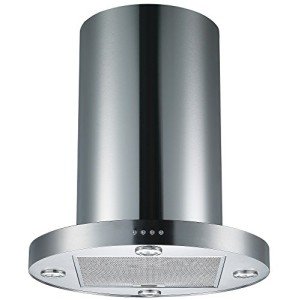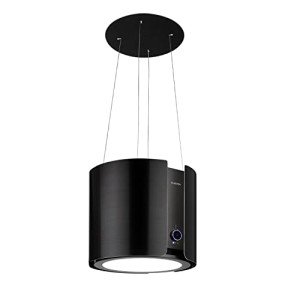"Ask Me Anything": Ten Responses To Your Questions About Island Extractor
Kitchen Island Extractor Fan: The Essential Guide to Choosing and InstallingA kitchen island extractor fan is an often overlooked however important component of modern kitchen style. Designed to get rid of smoke, odors, and moisture from the air, these home appliances not only improve indoor air quality but likewise include a visual attract kitchen areas. This post offers a thorough guide to kitchen island extractor fans, detailing their types, benefits, setup factors to consider, and maintenance tips.Comprehending Kitchen Island Extractor FansKitchen island extractor fans, also understood as downdraft extractors, are ventilators specifically created to be set up above kitchen islands. Unlike conventional wall-mounted or Kitchen island extractor fan ceiling-mounted range hoods, these fans come down from an island, efficiently drawing cooking vapors directly far from the cooking surface area. They are especially appealing in open-plan designs, where exposure and design cohesiveness are vital.Benefits of Kitchen Island Extractor Fans
- Improved Air Quality: These extractors efficiently eliminate unwanted particles, smoke, and odors, promoting a healthier kitchen environment.
- Visual Appeal: Island extractors are sleek and modern-day, offering an elegant focal point in kitchen style.
- Space Efficiency: They do not extend outward like traditional hoods, making them ideal for kitchen areas with restricted vertical area.
- Flexible Cooking Arrangement: With an island ventilation hoods extractor, house owners can put their cooktops on islands without compromising ventilation.
- Noise Reduction: Many modern-day extractor fans are designed to run quietly, boosting the cooking experience.
Kinds Of Kitchen Island Extractor FansKitchen island extractor fans can be classified based upon their setup method and performance. Below are some common types:Type of Extractor FanDescriptionDowndraft ExtractorsRetractable fans that rise from the countertop or island when required.Canopy HoodsStreamlined styles that install directly above the cooking area and vent upwards.Chimney cooker hoods for islandsExtend from the wall or ceiling and generally draw air through a duct system.Ductless ModelsUsage filters to clean the air and recirculate it back to the kitchen.Choosing the Right Kitchen Island Extractor FanWhen choosing an extractor fan for a kitchen island, several aspects should be considered:
- Suction Power: Measured in cubic feet per minute (CFM), suction power ought to be proportional to the cooking surface. A typical suggestion is the following:
- For gas cooktops: 100 CFM per 10,000 BTUs (British Thermal Units).
- For electrical cooktops: 300 CFM for an electrical stove.
- Style: Choose a design that complements your kitchen visual appeals. Consider the product, finish, and overall style of your kitchen.
- Setup Space: Ensure the size of the extractor fits within the readily available area. Examine the kitchen island’s dimensions and style.
- Noise Level: Look for designs with lower sones (a procedure of noise); preferably, listed below 55 sones for a quieter operation.
- Maintenance: Consider ease of cleansing and filter replacement. Some models offer removable and dishwasher-safe parts.
Setup ConsiderationsInstalling a kitchen island extractor fan involves several essential factors to consider:
- Ducting Requirements: Many extractors need direct ducting to the exterior. This may include adjustments to existing structures and can be more complex based on ceiling height and design.
- Electrical Considerations: Ensure that the installation adheres to electrical codes. A certified electrical expert might be essential for linking power.
- Height of Installation: The fan’s height should be above the cooking location for optimal performance and security.
- Consultation and kitchen island extractor fan Professional Installation: Due to the complexity of some setups, seeking advice from with a professional kitchen designer or contractor is advised.
Upkeep Tips for Kitchen Island Extractor FansTo guarantee durability and optimal efficiency, routine maintenance is crucial. Here are a few pointers:
- Clean Filters Regularly: Depending on use, filters need to be cleaned or replaced every 1-3 months. Many can be washed in the dishwasher.
- Dust and Debris Removal: Wipe down the outside of the fan and surrounding areas to prevent dust buildup.
- Check for Blockages: Ensure that ducts are clear of obstructions, as clogs can significantly decrease effectiveness.
- Professional Servicing: Consider expert maintenance yearly to maintain optimal performance and safety.
Frequently asked questions
- How do I understand what CFM is suitable for my kitchen?
- The suggested CFM is based upon the type of cooktop you have. For gas cooktops, it’s about 100 CFM per 10,000 BTUs, while for electric, a minimum of 300 CFM is a good idea.
- Are ductless extractor fans efficient?
- Yes, ductless extractor fans work for light cooking, using filters to recirculate the air. Nevertheless, for heavy cooking or high heat, ducted systems are advised.
- Can an island extractor fan be set up in a low ceiling?
- Yes, there are designs particularly developed for lower ceilings, consisting of downdraft extractors that can be concealed when not in use.
- How often should I clean my extractor fan?

- Filters need to be cleaned up or replaced every 1-3 months, and the outside can be cleaned down weekly.
- Is it hard to set up an island cookers extractor fan?
- Setup can be difficult and often needs ducting and electrical work, so hiring an expert is recommended.
Choosing and keeping a kitchen island extractor fan kitchen extractor fan is important for attaining a practical and visually pleasing kitchen. By understanding the numerous types, advantages, and upkeep demands, house owners can make educated choices that enhance their culinary experiences. With the ideal extractor fan in location, cooking in the house can be a more enjoyable and healthier undertaking. In summary, whether you’re designing a brand-new kitchen or upgrading your existing setup, a kitchen island hob extractor extractor fan is a worthy financial investment that combines functionality with design.